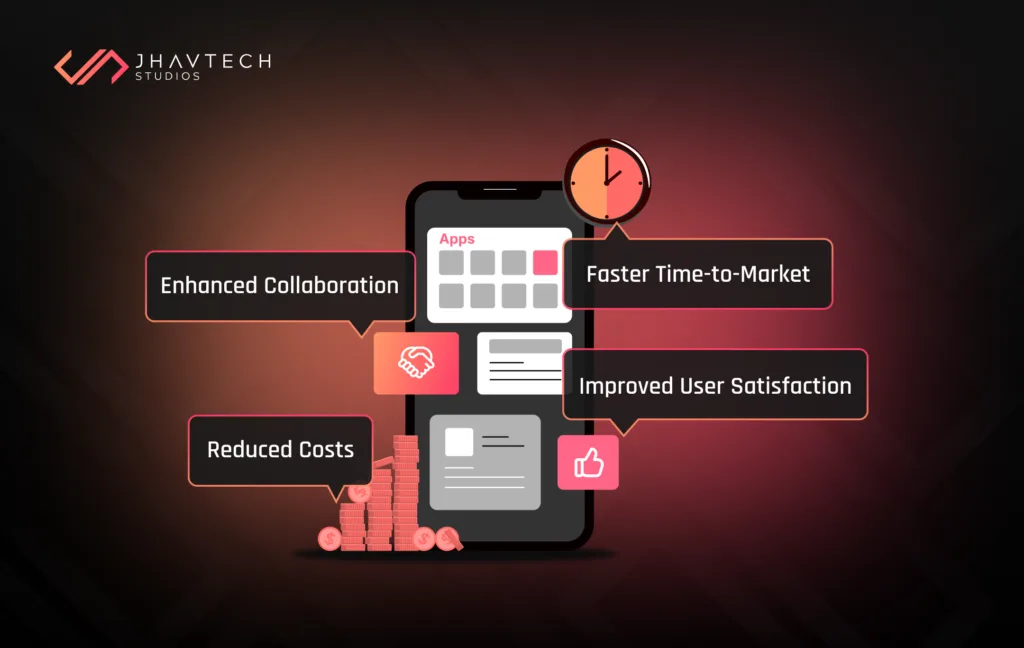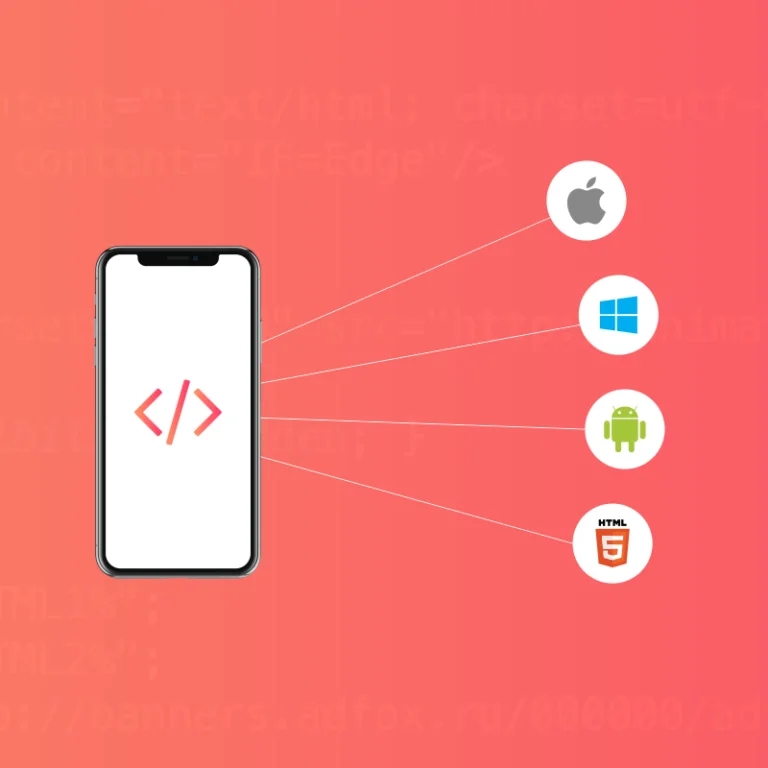In today’s fast-paced digital landscape, businesses face constant pressure to deliver innovative mobile applications that meet customer expectations and business needs. Achieving this while minimising development timelines and maintaining product quality can be a significant challenge. Streamlining the app development process addresses these challenges by reducing inefficiencies, fostering collaboration, and focusing on delivering value.
The demand for faster development cycles has never been more urgent. According to a report by Statista, the global app market is projected to generate $935 billion by 2025, making speed-to-market a critical factor for enterprises aiming to capture and retain their audience. With an effective streamlined process, businesses not only save time and money but also deliver higher-quality products that resonate with users.
At Jhavtech Studios, we’ve worked with startups and SMEs across industries to perfect our approach to streamlined app development, ensuring our clients achieve faster deployment without sacrificing quality. This article explores why streamlining is essential, the critical steps involved, and actionable insights for enterprises looking to leverage this methodology.
Why Streamlining App Development is Crucial
Streamlined app development is about creating efficient workflows that eliminate unnecessary steps, prioritise critical features, and deliver a high-quality product within a set timeframe. Its importance lies in the numerous advantages it offers:
Faster Time-to-Market
Speeding up the app development process gives enterprises a competitive advantage. Early market entry often leads to higher visibility and allows businesses to adapt their apps based on user feedback.
Reduced Costs
Efficient workflows lower overall project costs by minimising rework and reducing development waste. Industry reports show that adopting Agile practices can reduce costs by up to 25%.
Enhanced Collaboration
Streamlined processes align teams across departments, ensuring everyone works toward shared goals. Projects that emphasise cross-functional teamwork see fewer delays and higher overall satisfaction.
Improved User Satisfaction
Delivering a product that meets user expectations boosts engagement and retention. Apps that undergo iterative prototyping and testing often avoid critical usability issues and launch with better reception.

Key Steps in a Streamlined App Development Process
Streamlining doesn’t mean cutting corners; it’s about smart planning and execution. Below are the steps Jhavtech Studios follows to ensure success:
1. Discovery and Planning
The foundation of a successful app lies in thorough planning and discovery. This phase involves identifying goals, understanding the target audience, and defining the project scope.
Stakeholder Engagement
Analysing competitors helps identify market gaps and create innovative solutions that stand out. For instance, tracking competitors’ user reviews often reveals pain points your app can address, increasing market relevance.
Clear Scope Definition
Defining the scope avoids unnecessary changes later, saving time and resources. A well-defined scope ensures the team can focus on features that add the most value to end-users.
2. Agile Methodology and Iterative Development
Agile practices ensure flexibility, allowing teams to adapt to changes quickly while maintaining a steady development pace.
Sprint Planning
Breaking the project into sprints ensures manageable milestones, reducing burnout and keeping the team motivated. Studies show that incremental progress improves team productivity by 20%, as it creates a sense of accomplishment with each sprint.
Iterative Improvements
Regular reviews during sprints allow teams to refine features and identify potential problems before they escalate. This iterative feedback loop can improve feature quality by up to 35%, according to Agile Alliance reports.
3. Prototyping and User-Centered Design
User experience (UX) and user interface (UI) design are critical to creating an app that appeals to users and fulfills business goals.
Interactive Prototyping
Creating interactive prototypes allows stakeholders to visualise the app’s functionality and identify improvements before full-scale development. Research suggests that early prototyping reduces the risk of major redesigns by 50%.
Focus on User Needs
By prioritising user-centric design, apps achieve better engagement and retention rates. Data from UXCam reveals that apps with user-friendly interfaces see a 200% increase in active users within the first six months.
4. Development and Quality Assurance (QA)
The development phase brings the app to life, while quality assurance ensures it functions seamlessly.
Continuous Integration/Continuous Deployment (CI/CD)
CI/CD practices enable frequent updates, reducing downtime and improving stability. A recent survey shows that CI/CD pipelines reduce time spent on bug fixes by 60%, allowing developers to focus on new features.
Automated Testing
Automating repetitive tests not only speeds up QA but also ensures greater accuracy. Deloitte reports that companies using automated testing achieve a 48% faster time-to-market while maintaining higher compliance rates.
5. Deployment and Ongoing Maintenance
The app’s launch marks the beginning of its journey. Continuous support ensures long-term success.
Scalable Deployment
Apps must handle increasing user volumes efficiently, particularly during peak periods such as holidays or special events. Scalable deployment strategies have helped apps avoid downtime during high-traffic events, ensuring seamless user experiences.
Post-Launch Support
Regular updates keep the app relevant and competitive by addressing user feedback and integrating new trends. Apps that release timely updates see a 26% higher retention rate compared to those that don’t, according to research from Sensor Tower.

Why Choose a Streamlined Approach
Adopting a streamlined application development process has numerous benefits:
Competitive Advantage
Businesses that deliver apps faster often capture market share early, leading to increased revenue and greater brand visibility. Early entry allows businesses to establish their app as a go-to solution for users, creating a strong foothold that competitors may struggle to displace. Additionally, being first to market often enables businesses to set industry standards, positioning them as innovators and thought leaders.
Cost Efficiency
Focused workflows reduce unnecessary expenditure, driving down development costs and saving resources for future innovation. This efficiency enables better allocation of budgets to high-impact features, ensuring businesses can achieve their objectives without overspending. By streamlining processes, enterprises can avoid costly bottlenecks and rework, staying within budget while maximising ROI. Additionally, reduced development costs free up resources for reinvestment in areas such as marketing or scaling infrastructure, further enhancing overall project success.
Scalability
Apps developed with efficiency in mind can adapt to growing user demands seamlessly, ensuring long-term usability and performance. Scalable architecture also supports the addition of new features, integrations, or user bases without requiring costly redevelopment. This adaptability positions businesses to respond to market changes quickly, ensuring their app remains competitive and relevant as user needs evolve.
User-Centric Innovation
Streamlining leaves room for creativity and ensures apps address user needs effectively by incorporating regular feedback throughout the development process. By focusing on innovation driven by user demands, businesses can deliver products that delight customers and foster loyalty. Additionally, user-centric design often leads to higher engagement rates, as users feel their needs and preferences are being prioritised, creating a positive relationship with the brand.
Jhavtech Studios’ Track Record of Streamlined Success
At Jhavtech Studios, our streamlined approach has consistently delivered successful outcomes for enterprise clients across various industries. Here is an example of how we’ve helped businesses achieve their goals:
Case Study: Cricket Pulse Live – Revolutionising Sports Engagement
For a premier sports media company, we developed Cricket Pulse Live, a dynamic mobile app designed to deliver real-time cricket updates, scores, and detailed match analytics. The challenge was to create a seamless user experience that could handle live data streams and provide accurate, up-to-the-minute information during cricket matches.
Using our agile development approach, we delivered the app within a short timeline, integrating live score updates, personalised match alerts, and interactive features like live commentary and player statistics. The app’s robust architecture ensured high performance even during peak traffic, enhancing user engagement during major cricket events. By delivering the project ahead of schedule, we helped the client enhance their fan base and improve user retention, establishing Cricket Pulse Live as a go-to app for cricket enthusiasts.
Jhavtech Studios: Your Partner in Streamlined Development
At Jhavtech Studios, we blend industry expertise with cutting-edge tools to deliver apps that exceed expectations. Our approach guarantees efficiency, quality, and user satisfaction, helping you achieve your goals faster. Whether you’re building a healthcare app, an educational platform, or a social media solution, we are here to bring your vision to life. By partnering with Jhavtech Studios, you can confidently accelerate time-to-market without sacrificing quality.
Ready to streamline your app development and bring your idea to life? Contact us today and let us help you get started on your path to success.
.svg)












